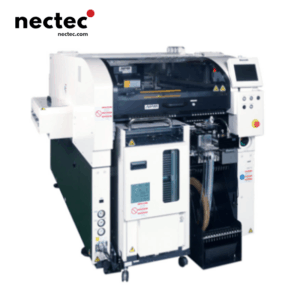In the fast-evolving landscape of modern manufacturing, China has emerged as a global leader in the production of automation equipment, particularly pick and place machines. These machines play a crucial role in increasing efficiency and accuracy in the assembly process across various industries, from electronics to automotive. In this blog post, we will explore the workings of pick and place machines, their benefits, the technology behind them, and why China is the go-to destination for high-quality manufacturing solutions.
Zrozumienie maszyn typu Pick and Place
Pick and place machines are robotic devices that automate the process of picking items from one location and placing them in another. Ideal for high-speed assembly lines, these machines minimize human error and boost productivity. They are commonly used in the manufacturing of printed circuit boards (PCBs), packaging, and many other applications where speed and precision are paramount.
Kluczowe komponenty maszyn Pick and Place
The design of a pick and place machine is intricate, with several critical components working in harmony:
- Ramię robota: The central component responsible for picking up and placing items. These arms often come with multiple degrees of freedom, allowing for versatile movements.
- System wizyjny: Equipped with cameras and software, the vision system helps the machine identify the exact location of items, ensuring accurate picking.
- System przenośników: A conveyor belt transports items to the pick and place machine, streamlining the workflow and enhancing efficiency.
- System sterowania: A sophisticated control unit processes data from the vision system and dictates the movements of the robotic arm, enabling precise actions.
Zalety korzystania z maszyn Pick and Place
The adoption of pick and place machines in factories comes with numerous benefits, including:
- Zwiększona produktywność: By operating at high speeds, these machines can significantly boost the output rate of manufacturing processes.
- Ulepszona dokładność: They reduce the likelihood of human error, ensuring that each piece is placed precisely, which is crucial for quality assurance.
- Opłacalność: Although the initial investment might be significant, the long-term savings on labor and waste make pick and place machines a cost-effective choice.
- Skalowalność: Companies can easily scale their production by integrating additional machines without a substantial increase in labor costs.
Technologia stojąca za maszynami Pick and Place
The technological advancements in pick and place machines have made them smarter and more efficient. Many modern machines utilize artificial intelligence (AI) and machine learning to optimize their operations continuously. They can analyze past performance data and adapt their processes to improve speed and accuracy. Innovation in sensor technology allows for real-time monitoring, reducing downtime and increasing overall productivity.
China: The Hub of Pick and Place Machine Manufacturing
China’s prominence in the manufacturing sector, particularly in automation technology, can be attributed to several factors:
- Ekonomiczna produkcja: Low labor costs, combined with a robust supply chain, allow for affordable mass production of pick and place machines.
- Postęp technologiczny: Chinese manufacturers are investing heavily in R&D, leading to the development of cutting-edge pick and place technologies that meet international standards.
- Globalny łańcuch dostaw: China’s well-established logistics and shipping infrastructure facilitate the export of robotics and automation equipment to all corners of the world.
- Wiedza branżowa: With a vast pool of experienced engineers and technicians, Chinese factories have honed their skills in automation, leading to high-quality productions.
Rola maszyn typu Pick and Place w różnych gałęziach przemysłu
Pick and place machines find applications in multiple sectors, transforming traditional manufacturing processes:
1. Produkcja elektroniki
In electronics manufacturing, pick and place machines are vital for assembling PCBs. They accurately place tiny components onto boards, ensuring that complex circuits are built with precision and speed.
2. Przemysł motoryzacyjny
In the automotive sector, these machines aid in the assembly of parts, including sensors, chips, and other critical components. Their efficiency contributes to faster assembly line processes.
3. Żywność i napoje
Food and beverage manufacturers use pick and place machines for packing operations. They can quickly and accurately handle items, making packing processes more streamlined and hygienic.
4. Farmaceutyki
In pharmaceuticals, accuracy is crucial. Pick and place machines assist in assembling drug packaging, ensuring that every package is sealed correctly and labeled without errors.
Investing in the Future: Choosing the Right Pick and Place Machine
When investing in pick and place machines, companies must consider several factors to select the right machine for their production needs:
- Wielkość produkcji: Evaluate the volume of production to choose a machine that can handle the required speed and efficiency.
- Rozmiar komponentu: Ensure that the machine can accommodate the size and weight of components being handled.
- Możliwości integracji: Consider whether the machine can easily integrate with existing production systems and software.
- Wsparcie i konserwacja: Opt for manufacturers that offer reliable support and maintenance services to ensure long-term productivity.
As automation continues to shape the future of manufacturing, pick and place machines stand out as pivotal solutions driving efficiency and precision. China’s position as a leading manufacturer of these machines is set to grow, introducing innovations that promise to redefine industries across the globe. With an emphasis on quality and reliability, businesses looking to optimize their production processes will find that investing in pick and place technology is a step towards a more automated and efficient future. The journey of integrating automation technology into manufacturing processes is not merely a trend but a necessity for staying competitive in today’s fast-paced market.






